A B C D E F G H I J K L M N O P Q R S T U V W X Y Z
1799-1886
DACRES, Admiral Sir Sidney Colpoys GCB
1806-1884
Son of Vice-admiral Sir Richard Dacres, he joined the Royal Artillery as a second lieutenant in 1817, tranferred to the Royal Horse Artillery in 1843, promoted to major in 1851 and lieutenant-colonel in 1852, commanding forces during the Crimean War at the battles of Alma, Balaclava and Inkerman and through the siege of Sevastopol and took command of all artillery in Crimea for the final stages of the war. He retired from active service in 1877 and was appointed Constable of the Tower in 1881, becoming Master Gunner of England the following year. He was granted the rank of field marshal five months before his death, at which time he was president of the Hove Club.
Sir Sydney Dacres. Sailor.
Brother of Field Marshal Sir Richard Dacres, he joined the Royal Navy in 1817, commissioned as lieutenant in 1827. After action in the bombardment of Sevastopol in the Crimean War, he was appointed captain-superintendant of Haslar Hospital and the Royal Clarence (Gosport) Victualling Yard. He became a flag officer as captain of the fleet in the Mediterranean and in 1863 was commander-in-chief in the Channel until promotion to vice-admiral in 1865. He became First Sea Lord between December 1868 and November 1872, becoming a full admiral in 1870.
1
 2
2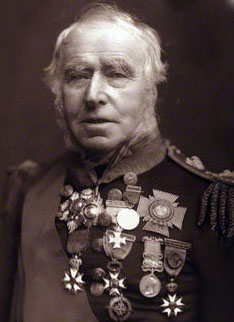
Images: 1. Sir Richard Dacres; 2. Sir Sydney Dacres.
5 Adelaide Crescent [residence 1882]
28 Palmeira Square [residence 1886, deathplace]
PERSONAL (Sydney)
• 47 Brunswick Square [residence 1884, deathplace]
1784-1855
 Soldier.
Soldier.Joined the army in 1799, was in India until 1808 and served 26 years on the general staff. In 1815 he was with Wellington's army for the capture of Paris. He wrote the army textbook Regulations and Punlishments of the British Army. He was Lieutenant-Governor of Hong Kong 1843-1848, where a street and Cape D'Aguilar are named in his honour, as are the town of D'Aguilar and D'Aguilar National Park in Queensland, Australia.
• 30 Brunswick Square [residence 1852-1855]
1912-1993
 Solicitor, historian, conservationist, author.
Solicitor, historian, conservationist, author.Born in Reigate, the son of a London merchant and grandson on his mother’s side of a gentleman in Kemp Town, he was educated at Brighton College and Oriel College, Oxford. He qualified as a solicitor and after World War Two joined the investigative team of historic buildings at the Department of the Environment, where he was involved in the introduction of the scheme to list buildings of heritage significance in the 1950s. He served as chief investigator between 1961 and 1976. He was one of the founders of the Regency Society of Brighton and Hove in 1945 and its secretary and most influential member for 45 years from 1948 until his death. He left £2,987,707.
• 46 Sussex Square
• 38 Prince Regent's Close (-1993)
1784-1866
 Soldier, politician.
Soldier, politician.Army officer and MP for Brighton 1837-1841 (contested the seat unsuccessfully in 1832, 1835 and 1841). He was MP for three other constituencies at different times.
• 5 Brunswick Terrace
1866-
Eccentric character comedian, singer and composer of humorous songs. He was born in South Kensington but little is known about him, other than appearances on the variety stage from 1889 to 1910. In 1901, when briefly the landlord of the King's Head in West Street, he appeared in six films by James Williamson. In November 1901 he was in the variety bill at the Empire Theatre of Varieties, New Road, with Lilian Travellie performing Fun in a Garden. He wrote a song, 'The Happy Convict; or, Ham and eggs for breakfast in the morning' (1902). He was living in Rotherham, Yorkshire in 1908.
• King's Head, 9 West Street [residence 1900]
1890-1975
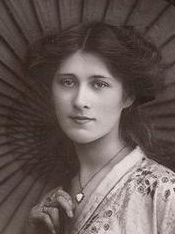 Actress
ActressBorn Phyllis Constance Haddie Dones in Chelsea, she first appeared on stage at the age of nine. She made her name in musicals, in starring roles from 1909. Her last role was in Ivor Novello's King's Rhapsody, appearing with her sister Zena, in a two-year run from 1949. She retired to Brighton in 1951.
• Flat 19, Mitre House, 149 Western Road [residence 1949-1965]
• 68 Sedgwick Road (now Bramble Way), Hollingbury [residence 1966-c1975]
1861-1931
 Engineer and cinematograph pioneer.
Engineer and cinematograph pioneer.Son of a 'master engineer and machinist' with a substantial business when Alfred was a boy (he employed 28 men and boys in 1871). Alfred initially worked for his father in Lambeth. He married in 1882. After the birth of their first two children (they went on to have six more), the family moved to Brighton in 1887/88 but Alfred remained in lodgings in London, working as an engine fitter. He began his own engineering business at his home, 47 Chester Terrace, Brighton in 1894, but by mid 1896 had moved the business into a workshop at 25 Ditchling Rise, shared with a builder. He moved the family home to 83 Ditchling Rise c1907.
On 18 September 1896 he was commissioned to carry out repairs to a film camera for Esmé Collings. Among early clients were G A Smith and James Williamson. The latter ascribed the early start of film-making in the area and his own beginnings to the contribution made by Darling.
With Alfred Wrench he designed a 35mm camera, which they patented in 1897. For Charles Urban in 1899, he designed and built the Biokam camera for amateur and semi-professional use, which used 17.5mm film. As well as cameras and projectors, his company made film printers, perforators, winders and tripods. In 1901, when he was still listed in the census as a railway engine fitter, he was commissioned by Urban to make a prototype three-colour camera to a design by Edward Turner, whose work—the basis of G A Smith's work that led to Kinemacolor—was backed by Urban.
When Charles Urban Trading Company was set up in 1903, Darling was an investor and, for a time, a director of the company. His company moved from Ditchling Rise to South Street, Preston in the north of Brighton in 1926. Alfred Darling left nearly £26,000 and is buried in Hove cemetery.
• 47 Chester Terrace [residence 1888-1906] new-build
• 25 Ditchling Rise [workshop 1896-1926]
• 83 Ditchling Rise [residence 1907-1931]
1772-1858
 Colonial administrator.
Colonial administrator.Governor of New South Wales 1824-1831. Highly unpopular during his tenure, the Darling River and Darling Downs are named after him, the Sydney suburbs of Darling Point and Darlinghurst after his wife. He retired to and died in Brighton.
Image: National Portrait Gallery
† Hampton Lodge (132) Western Road [residence 1846-1850]
• 39 Brunswick Square [residence c1851-c1856]
1870-1944
Born into a military family (his father was a lieutenant-colonel on the Madras staff), Captain Davidson of the 6th Sussex King’s Militia (late of the 4th Battalion The King’s (Liverpool) Regiment) was an experimenter in colour photography and cinematography. His first patent, in 1898, was for a three-lens camera, each lens with a filter of one of the primary colours. The following year he introduced a practical colour photography system. At the time of the 1901 census he and his wife, recently returned from Ireland, where their infant son was born, were occupying three rooms in the lodging house of Mrs Elizabeth Groves at 8 White Rock Road, Southwick. In subsequent years, now with four children, they lived in Southview road, Southwick.
In May 1901 Davidson bought a Kammatograph camera/projector—images were recorded in a spiral on a glass disc—which he used in colour cinematography experiments in collaboration with Dr Benjamin Jumeaux, who lived around the corner. They patented a two-colour system in 1903, using light-splitting prisms in the camera and projector. Their test films were processed by G A Smith in his plant at St Ann’s Well Gardens but were not considered to be of acceptable quality. The ‘laboratory for natural colour photography’ in the name of Davidson and Jumeaux was at 20 Middle Street, Brighton, where Davidson was also listed as an occupant in directories between 1904 and 1907 (in 1905 the listing is for ‘Davidson’s Patents’, which merited its own listing).
In 1906 he and William Friese Greene demonstrated a two-colour film system at the Royal Institution and later that year at the Photographic Convention of Great Britain in Southampton. However, Davidson seems to have abandoned the work, on which he spent £3,000, following the patenting by Smith and Charles Urban of the two-colour system that became known as Kinemacolor.
• 20 Middle Street [workshop c1904-1905]
1819-1879
Nicknamed 'The Leviathan'. Born in London, where he worked for the building firm Cubitt & Co. During a working visit to Newmarket he started taking bets. His clientele grew on the basis of his readiness to pay out whatever the size of the stake and the odds. He retired in 1857 and moved into the King and Queen Hotel in Marlborough Place, Brighton before buying his final home. Described in the 1861 census as 'holder of railway shares', he left £60,000 of these shares to Brighton Corporation, of which £50,000 was used to buy Preston Park in 1883.
• 18 Gloucester Place [residence 1858-1879, deathplace]
• Preston Park
1877-1940
• Osmond Road
• Davigdor Road
1868-1938
Née Vincent, her first husband was William John Crichton; her second, whom she married in 1910, was Baron Guy Marie de Chassiron (1864-1932). She was the founder of the Bluebell Time Charity. She left £31,271 2s 2d.
• Pier Lodge, 94 King's Road [residence 1930-1936]
• 19 Brunswick Terrace [residence 1936-1938]
1867-1945
Née Elizabeth Lydia Rosabelle Bonham, born in Naples, Italy, daughter of the British consul at Calais. She married Count Henry Philip Ducarel de la Pasture in 1887. She was a prolific novelist from 1900 to 1918. The de la Pasture family home was at Llandogo Priory, Monmouthshire, where her husband died in 1908. In 1910, at Westminster Cathedral, she married Sir Hugh Clifford GCMG, GBE, then colonial governor of the Gold Coast, later of Nigeria, Ceylon and the Malay States, and friend of novelist Jospeh Conrad. She lived at Pulborough at the time of her death, leaving £16,766 8s 3d. One of her daughters was the novelist E M Delafield.
1902-1995
 Fire brigade officer.
Fire brigade officer.Brighton-born son of a master tailor who joined the Royal Navy on his 16th birthday, two weeks before the end of World War I, as a wireless telegraphist. In 1922 he joined the Brighton Fire Brigade, becoming the youngest Second Officer in the country in 1929 at the age of 27. He was appointed chief officer of Croydon Fire Brigade in 1934, introducing radio communications between appliances and headquarters. He supervised the deployment at the fire that destroyed Crystal Palace in 1936. He was Deputy Inspector-in-Chief of Fire Services during World War II and Chief Officer of the London Fire Brigade from 1948, the first to be knighted in office in 1962, the year of his retirement. He died in Hove.
• 2 Baker Street [childhood residence]
1799-1876
He founded the Female Orphan Asylum in Western Road in 1822, which moved to Gloucester Street and then in 1853 to a new building in Eastern Road (now the Latilla Building of the Royal Sussex County Hospital).
• Rosaz House, Bristol Gate
PERSONAL
• 51 Upper Bedford Place
• 1 Arundel Terrace
1712-1787
 Artist.
Artist.Born in Preston, Lancashire, he was taught by Peter Tillemans, the Flemish painter. He came to concentrate on prtrait painting, first of pro-Jacobite Lancashire families, then established a studio in London in 1745. He was president of the new Free Society of Artists but was never made a Royal Academician. Only six of his 22 children survived, two of them becoming painters. He sold all his remaining paintings in 1783 and retired to Brighton, where he died.
Image: Self-portrait [Bridgeman Art Library]
1826-1904
Born in Weston-on-Trent, Derbyshire, son of a farmer, he was a farmer of 700 acres at Sapperton, Gloucester by 1853 and retained the farm throughout his life. He was a Brighton councillor for St Nicholas ward -1891, Montpelier ward bef1895-1900. Sometime colonel of 1st Volunteer Battalion Royal Sussex Regiment, master of Brighton Harriers, lord of the manor of Coates, Cirencester
• Dewe Road
PERSONAL
• 28 Buckingham Place [residence 1878-1896]
• 90 Montpelier Road [residence 1899]
• 2 Goldsmid Road [residence 1901-1903]
• 4 Powis Villas [residence -1904]
1829-1912
Owner of large plantations in Ceylon, his maternal great-grandfather was Mayer Amschel Rothschild, founder of the banking dynasty. His father was made a hereditary baron of the Austrian Empire by Franz Joseph I, the title he inherited in 1882. His principal residence was at Milton Park, Egham, Surrey but he maintained a residence in Hove, where he was a county magistrate (1896-1912). He left £198,195 4s 8d.
• 27 Adelaide Crescent [residence 1877-1912]
1812-1870
 Author.
Author.The greatest novelist of the Victorian era. He was a frequent visitor to Brighton, coming to the town from 1837 and staying at several of the hotels on the seafront. He wrote much of Dombey and Son while staying at the Bedford Hotel in 1846. When he began touring with performances of readings from his works, Brighton was on his itinerary. His final visit was for an appearance at the newly-opened 3,000-seat Grand Concert Hall in West Street in 1868.
† Bedford Hotel, King's Road
† Grand Concert Hall, 78 West Street
1794-1875
DICKINS, Charles Spencer Scrase
1830-1884
DICKINS, Charles Robert Scrase DL JP
1857-1947
Born in Brighton and baptised at St Nicholas' Church. He married Lady Frances Elizabeth Smith Compton, daughter of Charles Compton, 1st Marquess of Northampton, who inherited the Coolhurst estate at Horsham from her mother, where they lived. Owned one moiety of the Manor of Brighton1. Deputy Lieutenant for the County of Sussex.
Charles Spencer Scrase Dickins. Landowner.
Son of Charles Scrase Dickins, he was born in Hove. His properties included the York Hotel, Old Steine1. He lived at Newells, Lower Beeding, died in Cannes, France and left £21,613 16s 7d.
Charles Robert Scrase Dickins. Landowner.
Born in Hove, son of Charles Spencer Scrase Dickins. President of the Royal Sussex County Hospital. Lived at Coolhurst, Horsham (for the gardens at which he was awarded the RHS Victoria Medal for Horticulture in 1934), Chester Square, London and 11 Chichester Terrace. He left £12,596 1s 8d, plus settled land valued at £247,248 4s 8d.
• 11 Chichester Terrace [C R S Dickins' residence]
1Poll Book 1856
1847-1906
Born in Philadelphia, the daughter of an engraver, she studied in Paris 1873-1876 and returned to the USA in 1885 but went back to France, influenced by French symbolism, the Pre-Raphaelites and fairy painting. She moved to Brighton in 1891. Her 'Honey of Hymettus' ('Butterflies') sold in 2017 for £70,000.
† 50 Rose Hill Terrace [residence]
† Dorset Buildings
• Dorset Gardens
• Dorset Street
• New Dorset Street
• Dorset Court, Carlisle Road
• Hangleton Manor
1825-1900
Born in Shepperton, Middlesex and educated as Bedford Grammar School and Exeter College, Oxford, he was ordained in 1859. He held various posts as curate and tutor, becoming chaplain to the Brighton Industrial Schools from 1868 to 1873. His relations with the Board of Guardians became strained. He believed that the Guardians had employed women with illegitimate children and criminal convictions, while the matron objected to his own immoral behaviour. After claims and counter-claims he sued the Guardians for libel, and the Local Government Board demanded Dodwell's resignation, which he refused. He was dismissed in March 1873 and his appeal for reinstatement was refused. At one point the Guardians resolved not to open any letters from him because of their abusive nature. He left Brighton for Devon and ran into similar problems, which started a process of involvement with the law. In February 1878 he fire a pistol at the Master of the Rolls, Sir George Jessell, outside the court in Chancery Lane. At his trial he raised the issue of losing his livings in Brighton. He was acquitted of attempted assassination but found guilty of common assault and committed to Broadmoor psychiatric prison, where he eventually died.
1870-1945
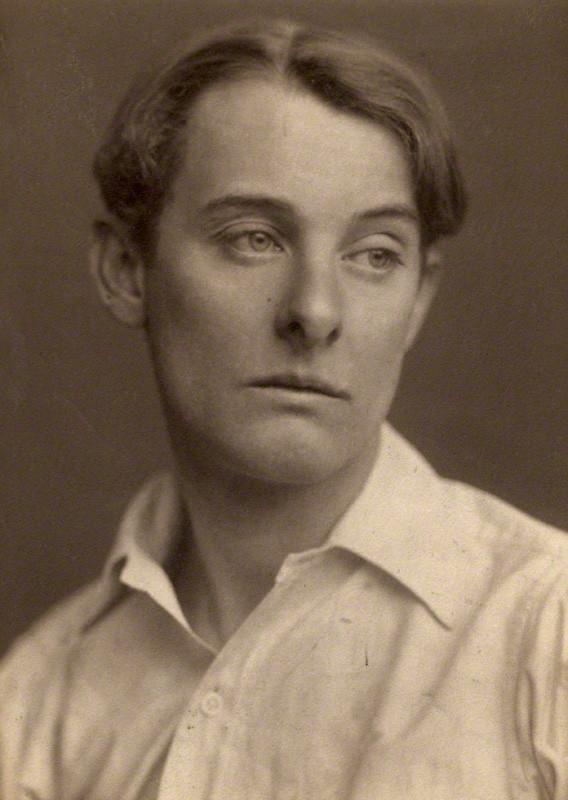 Poet and journalist.
Poet and journalist.Known as Bosie, he was the third son of John Sholton Douglas, 9th Marquess of Queensberry, whom Oscar Wilde sued in 1895 for libel, which led to Wilde's own trials for gross indecency involving his relationship with Bosie. Douglas himself was not prosecuted. In 1902 he marred the poet Olive Custance; he converted to Roman Catholicism in 1911 and repudiated homosexuality. In 1923 he was sued for criminal libel by Winston Churchill over Douglas's claim that Churchill had been implicated in a plot against Lord Kitchener, for which Douglas was found guilty and jailed for two years. He lived with his mother, the Dowager Marchioness of Queensberry, in Hove until she moved to a nursing home and he took a flat nearby. He died in Lancing and is buried at Crawley.
• 35 Fourth Avenue [residence 1927-1935]
• 1 St Ann's Court, 15 Nizells Avenue [residence 1935-1945]
1906-1993
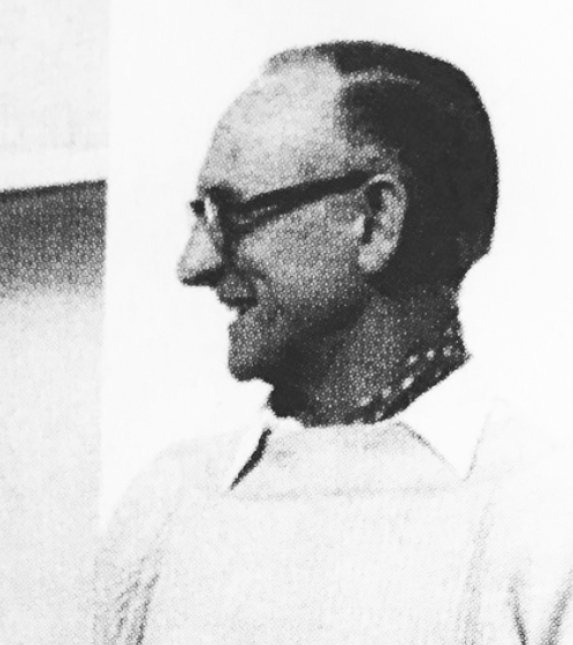 Artist.
Artist.Brought up in Durban, South Africa, he led an itinerant and varied life before returning to England in 1939 to join the Military Police and served in Africa, the Middle East and Europe. Temporarily blinded by a bomb in 1945 he took up painting during his recuperation. (He claimed to be an illegitimate son of Augustus John.) He is buried in St Margaret's churchyard, Rottingdean.
• 79 Marine Parade [residence 1959-1961]
1874-1964
Born in Rosario, Argentina, he died in Hove.
• 27 New Steine [residence]
1849-1912
 Politician, then royalty.
Politician, then royalty.MP for Elginshire and Nairnshire 1874-1879, when he succeeded as 6th Earl Fife. He was created Earl of Fife in 1885 by Queen Victoria and in 1889 married her granddaughter, Princess Louise, following which he was created Duke of Fife and Marquess of Macduff. He fell ill after surviving a shipwreck with his family off the coast of Egypt and died at Aswan.
• 1 Lewes Crescent (Fife House) [residence 1896-1924]
1876-1962
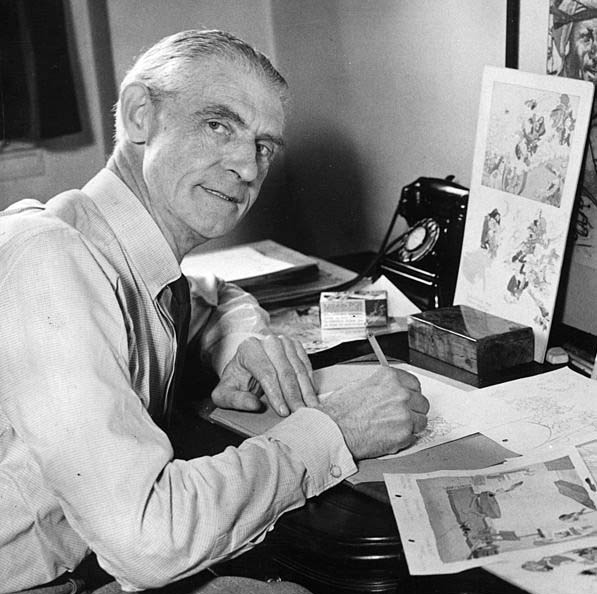 Animator.
Animator.A pioneering and, during the 1930s, England's leading film animator. He was born, probably at his childhood home in William Street, the fifth of at least seven children of James Dyer, a 'chairman' (previously a carrier of a sedan chair but by then someone who pushed an invalid carriage around town), and Sarah, a charwoman. He studied at Brighton School of Art in Grand Parade. Rejected for service during the First World War, he began his film career making topical war cartoons for British Colonial and Kinematograph Company in 1915. He joined the Hepworth Company in August 1919. His company Analysis Films, established in 1939, made films for the Ministry of Information. He formed Stratford Abbey Films, based in Stroud, Gloucestershire, and had the only Technicolor production unit in Europe in the 1940s. He died at Cheltenham.
† 55 William Street
• 43 Chester Terrace [family residence 1889-1891] new build
• 28 Chester Terrace [family residence 1893]
• 55 Chester Terrace [family residence 1895]
• 41 Chester Terrace [residence 1897-1900]
